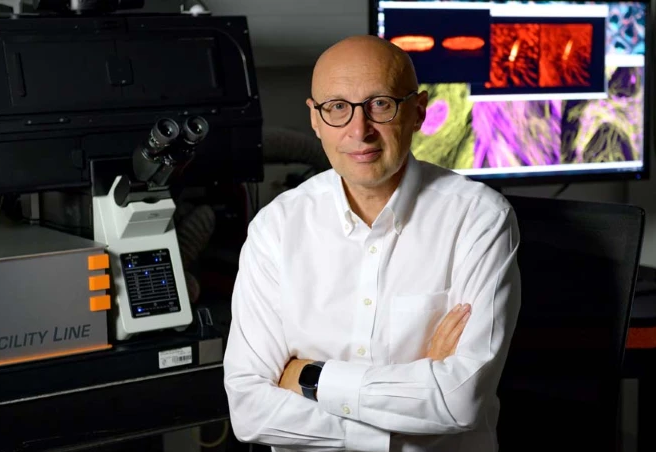Author: WANG Hui |
“When all those around me are drunk, I alone am sober,” lamented an ancient Chinese poet on fighting a lone and helpless cause. In the world of science a few decades ago, there was also a lone researcher who pursued the field of optical resolution despite suspicions and derisions. Unlike those who made their names young, this scientist only succeeded thanks to his own perseverance. He developed the 4Pi microscope and successfully increased the vertical resolution of traditional optical microscopes by 3–7 times. Once he sold the patent to a company, he invested the little personal money gained from the patent in breaking the Abbe diffraction limit. Despite all his hard work, his papers kept getting rejected by respected journals, and his work was subjected to mistrust and even criticism. This scientist is Stefan Hell, someone who is never afraid of difficulties and ever determined to forge ahead.
Hell was awarded the Nobel Prize in Chemistry in 2014 for being the first to propose and demonstrate that the optical diffraction limit can be broken, and for successfully developing the STED super-resolution fluorescence microscope. Later Hell and his colleagues proposed and commercialized MINFLUX, which brought optical microscopy technology to the three-dimensional single-nanometer scale, opening the “post-superresolution era”.
Frank and sincere, persistent and humble, boldly innovative and resolute, Hell is a scientist, an entrepreneur, a mentor, and an everyday man who enjoys life.
In this interview, we will reacquaint ourselves with the Nobel laureate, Stefan Hell.

Biography: Stefan Hell is a director at both the Max Planck Institute for Multidisciplinary Sciences in Gottingen and the Max Planck Institute for Medical Research in Heidelberg, Germany.
He is credited with having conceived, validated, and applied the first viable concept for overcoming Abbe's diffraction-limited resolution barrier in a light-focusing fluorescence microscope. For this accomplishment, he has received numerous awards, including the 2014 Kavli Prize in Nanoscience and the Nobel Prize in Chemistry.
Stefan Hell received his doctorate (1990) in physics from the University of Heidelberg. From 1991 to 1993 he worked at the European Molecular Biology Laboratory, followed by stays as a senior researcher at the University of Turku, Finland, between 1993 and 1996, and as a visiting scientist at the University of Oxford, England, in 1994. In 1997 he was appointed to the MPI for Biophysical Chemistry (named Max Planck Institute for Multidisciplinary Sciences since 2022) in Gottingen as a group leader and was promoted to director in 2002. From 2003 to 2017 he also led a research group at the German Cancer Research Center. Hell holds honorary professorships in physics at the Universities of Heidelberg and Gottingen.
Article links: https://www.nature.com/articles/s41377-022-01034-w
